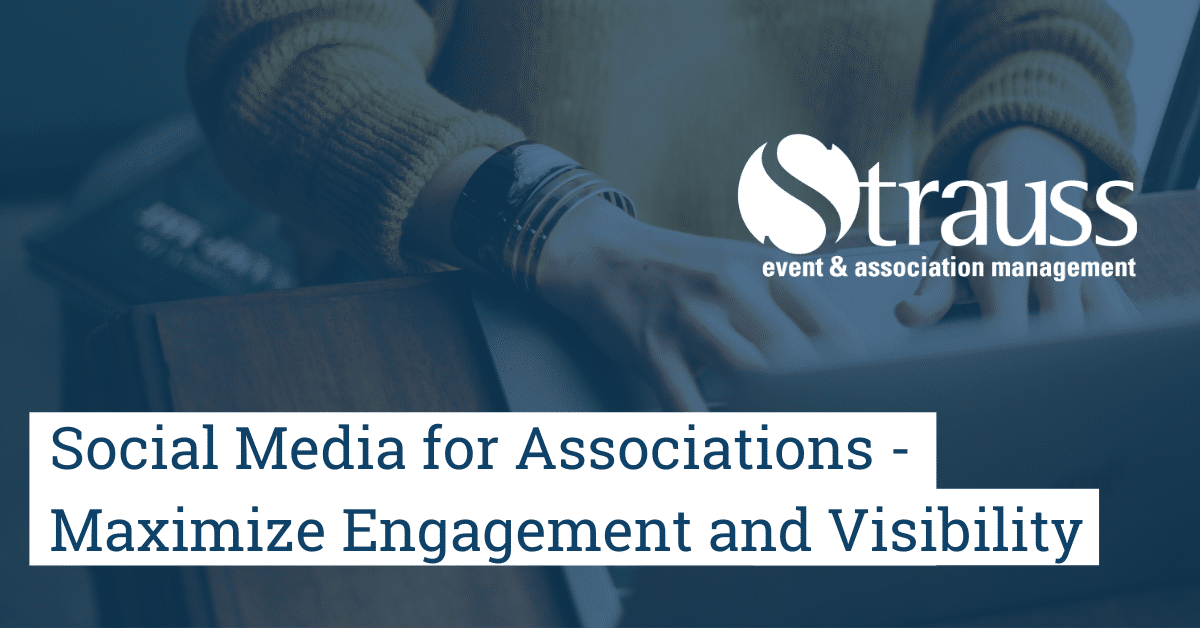One of the easiest ways for associations to keep their members updated on all the goings-on in their field or industry is through social media. Facebook and LinkedIn are great tools for connecting with members and sharing information, while Twitter and Instagram work well for generating buzz around events and members’ businesses and practices. However, access to all these platforms presents a challenge: what do you post and where do you post it? Each social media platform has its own strengths and weaknesses that associations should be aware of. Utilizing the advantages of each platform can lead to higher member engagement and better communication between member and association.
Where To Post?
As one of the largest social media platforms for personal use and business alike, Facebook should be in every association’s social media arsenal. According to a their 2020 Yearly Report Facebook has around 2.85 billion active monthly users as of May 2021. The report shows a steady increase in users since 2008; it is likely that usership will continue to grow. Twitter reports around 340 million users in 2020. Twitter is a difficult app to master, and its usership is more often personal than business related. However, associations can still utilize this platform to reach new and potential members and contribute to the discussion of the latest news and events of an association’s industry.
LinkedIn is a fantastic tool for associations. The platform is intended for professionals who are looking to network within their field and beyond. Association members on LinkedIn are likely to search for their association on the app of their own volition. LinkedIn reports 756 million users worldwide. It is crucial for associations to hold a presence on LinkedIn, as the platform is built precisely for professional networking.
My previous article, Making Impressions and Building Association Relationships with LinkedIn goes into further detail about how Associations can best utilize LinkedIn.
What To Post?
Communicating with members through social media is quite simple. Creating messaging or advertisement is as simple as typing up a post. Facebook posts’ character limit is 63,206, although members are unlikely to read a 10,000-word post. Despite the freedom of length, it is crucial that communication is accessible. If a post is too long, viewers will scroll right past it, so be concise. When posting to advertise an event or conference to members, including lots of information is perfectly necessary. Including an eye-catching graphic will help a post avoid becoming just another flick of the thumb on a touchscreen. Twitter limits character count to only 280 characters. With this platform, concision is key – get the message across and leave a link for more information.
Facebook and Instagram also offer the opportunity to post stories – quick and direct posts that appear at the top of users’ feeds. These are graphic based posts that automatically scroll through posts and then disappear after 24 hours. This is where eye-catching graphics are especially useful. Stories are great for when an association is trying to sell tickets for a conference or trade show. According to a study from Facebook for Business, 56% of users who viewed a brand’s story went on to browse that brand’s website to get more information. 49% of users who viewed looked for the brand’s product or service on websites where they could buy it.
Naturally, the basics of professional communications apply to social media posts. Double check that sentences are free of any sentence structure or punctuation errors. Test any links included in the post to ensure that it leads to the correct page. Read my colleague’s article for more information on basic dos and don’ts of social media for associations.
When To Post?
Strategically scheduling social media posts is vital to maximizing viewership and post engagement. According to Hootsuite Social Media Marketing & Management, “the best times to post on social media overall is 10:00 am on Tuesdays, Wednesdays, and Thursdays.” Each platform’s algorithm rates each post based on relevancy and interest to each user, recency, and the online relationship between the user and the poster. With these algorithms, relevancy trumps recency, so posts made early in the morning will be visible throughout the day and for a few days beyond, depending on the user. Below are the optimal times to post on each platform.
- Facebook: between 8:00 am to 12:00 pm on Tuesdays and Thursdays
- Twitter: 8:00 am on Mondays and Thursdays
- Instagram: Wednesdays at 11:00 am
- LinkedIn: 9:00 am on Tuesdays and Wednesdays
Since most association members work during business hours, it is useful to post in the morning so they will see it while on lunch or after work.
Conclusion
One challenge for an association on social media is accruing a following from its members. The association’s target audience on social media is most likely its members. However, Facebook and LinkedIn make it easy to find people (one of the basic purposes of the platforms). Search for members by name or business and invite them to follow the association’s page. For more information about connecting with association members online, read Connecting Your Association: Part 1 Millennial Communication and Part 2 – Gen X Communication.
Mastering social media is a difficult feat – and even more so because each platform is constantly evolving. Of course, each platform follows similar trajectories, but they all have different strengths and weaknesses. Creating a relationship with members through social media is a long-term investment. All it takes consistency and a pinch of strategy – in addition to proper spelling and grammar. Simple typos will always be the bane of any social media post!

